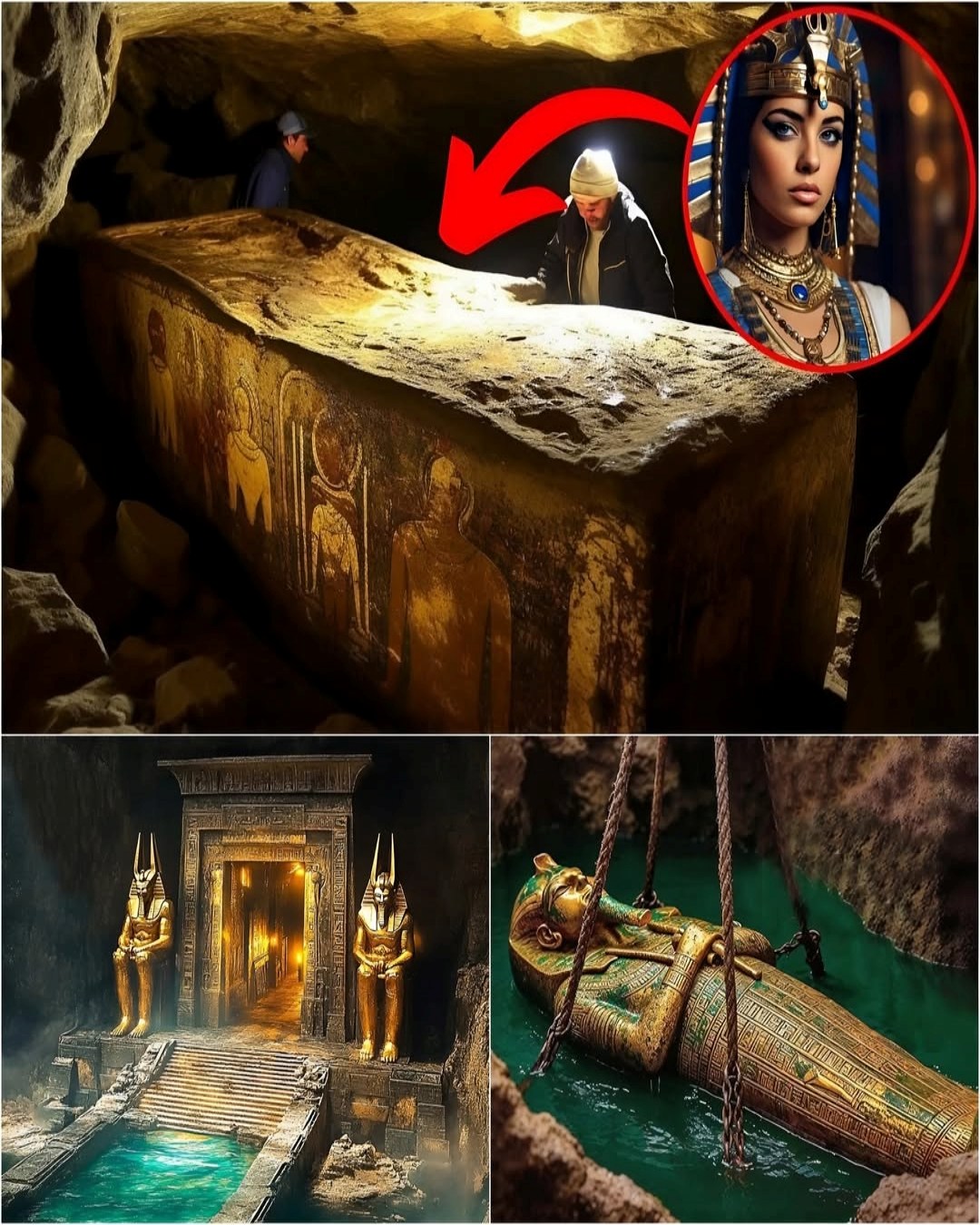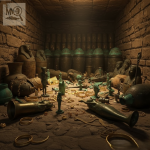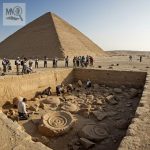Cleopatra’s Tomb Finally Unearthed: A Groundbreaking Discovery Near Alexandria

In a discovery that could rewrite the history of ancient Egypt, archaeologists near Alexandria have reportedly uncovered the long-lost tomb of Cleopatra VII, the legendary queen whose life and reign have fascinated the world for centuries. This monumental find promises to shed light on Cleopatra’s personal life, political power, and the cultural grandeur of the Ptolemaic dynasty, offering historians and the public an unprecedented glimpse into the life of one of history’s most iconic figures.
The Discovery

The tomb was uncovered during a meticulous excavation in the outskirts of Alexandria, a city deeply intertwined with Cleopatra’s life and legacy. Preliminary reports suggest that the site contains a wealth of artifacts, including intricate jewelry, ceremonial relics, inscriptions, and objects associated with royal ritual practices. These treasures, preserved beneath layers of sand and sediment for over two millennia, are expected to provide unparalleled insights into Cleopatra’s reign, her court, and the daily life of the Ptolemaic elite.
Archaeologists have noted the remarkable state of preservation. The tomb appears to have been carefully sealed, protecting both the queen’s remains and her treasures. Such preservation offers a rare opportunity to study ancient Egyptian mortuary practices, artistic expression, and the symbolic items that signified royal authority and spiritual beliefs.
Insights into Cleopatra and the Ptolemaic Dynasty
Cleopatra VII is celebrated for her intelligence, political acumen, and dramatic role in Roman and Egyptian history. The discovery of her tomb could illuminate aspects of her personal life, her relationships with Roman leaders, and the administrative and cultural sophistication of the Ptolemaic dynasty. Jewelry, ceremonial objects, and inscriptions may reveal new information about court rituals, religious observances, and diplomatic practices during her reign.
Beyond Cleopatra herself, the tomb provides insight into the broader society of Hellenistic Egypt, where Greek and Egyptian traditions merged to create a unique cultural landscape. Artifacts from the tomb may demonstrate craftsmanship, trade networks, and influences from both Mediterranean and African civilizations, offering historians a richer understanding of the period.

Global Significance
The discovery of Cleopatra’s tomb is not only an archaeological milestone but a cultural and historical revelation. Scholars, historians, and enthusiasts worldwide are eagerly following the excavation and analysis, anticipating findings that could transform our understanding of ancient Egypt, royal burial practices, and the life of a woman who shaped history through diplomacy, intellect, and charisma.
The find also has the potential to inspire renewed interest in Egyptology, tourism, and the preservation of cultural heritage, reminding the world of the enduring significance of ancient civilizations.
Conclusion
Cleopatra’s long-lost tomb near Alexandria represents one of the most extraordinary archaeological discoveries in modern history. With its treasure trove of artifacts, inscriptions, and possibly the queen’s remains, the site promises to deepen our understanding of Cleopatra VII, the Ptolemaic dynasty, and the grandeur of ancient Egyptian civilization. As researchers continue to study the tomb, the sands of time may finally allow Cleopatra’s legacy to speak directly, revealing secrets that have remained hidden for over two millennia. This discovery stands as a testament to human curiosity, historical preservation, and the timeless allure of one of history’s most fascinating figures.











